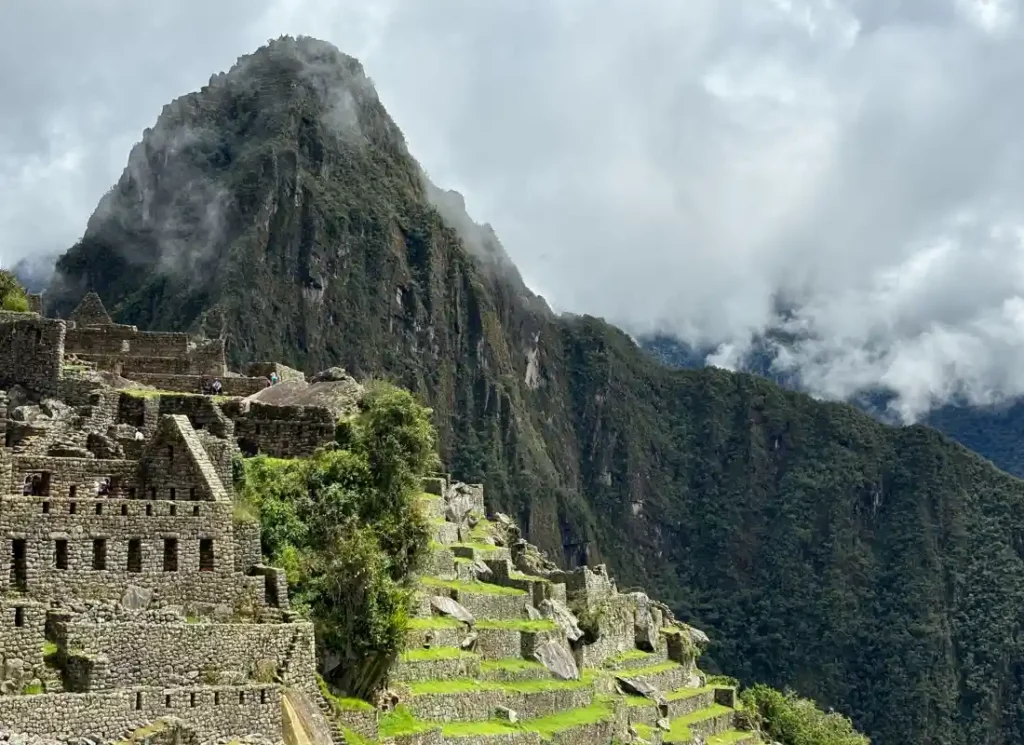How many days should you spend at Machu Picchu? This is probably one of the most important questions on your list when planning your Peru itinerary, if you’re anything like me at least. I’ve written before about how I hadn’t originally planned to visit Machu Picchu on my most recent trip to Peru (I was going to save it for a different trip), but once I’d changed my mind, getting to Cusco on time and planning the whole thing became my highest priority.
In the end, even though not everything went to plan, Machu Picchu was one of the best things I saw in Peru, in fact on my entire trip through South America. I had heard mixed reviews, but in my opinion, it was exactly as magical as you would imagine, especially given that it’s one of the seven new wonders of the world.
I personally did the five day Salkantay Trek to Machu Picchu, which I’ll write a little more about below, but don’t worry – this guide is for you, whether you’re into hiking or not.
Well, planning how many days to spend in Machu Picchu actually depends on what you’re thinking of as “Machu Picchu”. Are you talking about the historical site of the Incan Empire itself, or are you thinking of the nearby town, Aguas Calientes? Or, are you thinking of how many days you should spend in Cusco overall? If you’re confused already, don’t worry, I’ll break it down for you.
So grab a pisco sour (or a cup of coca tea if you’re sensitive to high altitude, like me), and let’s get into it.
🇵🇪 More on Peru: How to Create the Perfect 7 Day Peru Itinerary
How Many Days to Spend at Machu Picchu
Okay, to be clear, here I’m talking about the main event: the Machu Picchu Citadel itself.
For Machu Picchu itself, you only need one day. Going there for more than one day would be like going to the same museum two days in a row… kind of pointless? You’d also have to organise and buy two tickets, and they aren’t cheap!
Whilst, obviously, Machu Picchu deserves a lot of time and attention, it will take you 3-4 hours maximum to walk around the entire archeological site, and that’s with or without a tour guide. I’d recommend arriving early, with the best time to enter at 8 or 9am. When I went we had to enter much earlier (before 7am) because we’d bought our tickets last minute, which was fine, but we had to wait some time for the fog to clear before we even saw anything. (Speaking of the weather, read here what to pack & wear to Machu Picchu.)
As well as the main, multi-day hikes that you can do to Machu Picchu, such as the Inca Trail and the Salkantay Trek, you can also hike up from Aguas Calientes to Machu Picchu (it only takes a couple of hours, but it is a steep climb!). The alternative is to take the bus, which you can either book independently or with a tour operator.
There are also additional hikes and sights that you can do after you have entered Machu Picchu. These include Huayna Picchu and Machu Picchu Mountain, both of which are quite challenging and need to be booked in advance. There’s the Sun Gate (Inti Punku) which is less challenging, but also needs to be booked in advance. And, there’s the Inka Bridge, which is a short detour and doesn’t require an additional ticket.
So, as you’ll see, you can make this a short guided tour of Machu Picchu or a huge adventure, depending on what you want to do. If you want to do all of the different hikes, I suppose you could go two days in a row, but this is really uncommon.
📍Book: your all-included day trip to Machu Picchu from Cusco
(this is an affiliate link)
🇵🇪 More on Peru: How to Get from Huacachina to Cusco
How Many Days to Spend in Aguas Calientes
Now, let’s talk about the town of Aguas Calientes, the gateway town to Machu Picchu. If you take a day trip to Machu Picchu from Cusco, you will breeze through Aguas Calientes, probably just stopping to switch from the train station to the bus stop up to the gates of Machu Picchu. If you’re short on time, that’s a fine way to do it, but if you have the time then I would recommend spending at least one night here.
We spent the night in Aguas Calientes, arriving in the afternoon after the fourth day of the Salkantay trek. We ate, showered (for the first time in days), and then rested, before we got up at 4.30am the next day to begin the hike from Aguas Calientes to Machu Picchu.
Some of my fellow hikers had decided to spend a couple of extra days in Aguas Calientes before they returned to Cusco, and I wish I had done the same.
Staying in the town of Aguas Calientes before your visit to Machu Picchu means there’s no rush to and from Cusco, so you can either avoid the super early morning or a rush to the train station for the train ride home. If you’re taking a tour guide or using a tour operator, they should be able to help you plan this all, and give you advice and ticket times to best suit your needs.
There’s not much to do in Aguas Calientes itself (besides visit the market and drink Pisco sours), but there are a few other things to see in the area. There are plenty more hikes to do, there’s Cascadas Allcamayo nearby, as well as Aguas Calientes Hot Springs. (Yes, you’ll still want to see the hot springs, even if you go during the rainy season!)
How Many Days to Spend in Cusco
Okay, onto Cusco. I’m going to fly through this section because Cusco really isn’t synonymous with “Machu Picchu” at all, although it may be if you’ve never been there. Cusco is a destination in its own right, although it is generally the jumping off point for Machu Picchu. You can spend a few days or even up to a week in Cusco as there are so many things to see there, such as Rainbow Mountain, Pisac and the rest of the Sacred Valley.
If you’re really in a rush and you’re only heading to Cusco to see Machu Picchu, however, I’d still recommend spending a couple of days in the city acclimatising to the high altitude before you head up to Machu Picchu. Cusco is pretty high, at almost 3,400 metres, and whilst Machu Picchu isn’t that high (2,400m), if you haven’t acclimatised properly then you will still feel the effects of altitude sickness on your trip.
If you are spending some time in Cusco, I’d recommend putting your visit to Machu Picchu right in the middle. This gives you time to acclimatise before you go, and then prioritise what you want to do with the rest of your time in Cusco after visiting the Incan ruins.
🇵🇪 More on Peru: How to Get from Arequipa to Cusco
How Long Does the Inca Trail or Salkantay Trek Take?
So, if you’re thinking about hiking to Machu Picchu then keep your eyes peeled for more content coming your way! But, when it comes to timing, both of these hikes are pretty similar.
The Inca Trail typically takes four days (including your final day at Machu Picchu), whereas the Salkantay Trek usually takes five. You can do the Salkantay Trek in four days, but I wouldn’t recommend this as you skip some of the trail and the hot springs (which were a godsend after several days of hiking, especially during rainy season.)
The classic Inca Trail covers a total of 43 kilometres, reaching heights of 4,200m.
The Salkantay Trek covers 75-100 kilometres, depending on your route, reaching 4,600m at the Salkantay Pass.
I’ve only done the Salkantay Trek myself, but they say the same about both hikes: Day 1 is easy, day 2 is the hardest, and the rest are medium. (We disagreed, we thought that days 1 and 2 were equally as hard, but I suppose you have to make that decision for yourself!).
There are shorter Inca Trail hikes that join the Inca Trail part way through, if you don’t want to hike the whole way, but as far as I know there is no option to join the Salkantay Trek part way through.
If you’re hiking to Machu Picchu, especially on the Salkantay Trek, you should consider at least two days of acclimatisation in Cusco absolutely mandatory! The longer you can stay at altitude before you start the trek, the better.



